Time for Spring Cleaning!
- Tommy Wald

- Mar 23, 2023
- 3 min read
And don’t forget to include your IT.
Spring is finally here, and with it comes the time-honored tradition of spring cleaning. While many people focus on clearing out clutter from their homes, there are also important lessons to be learned from spring cleaning that can be applied to IT best practices.
Here are some key ways that spring cleaning and IT best practices intersect:
1. Identify what needs to be cleaned up. The first step in spring cleaning is taking stock of what needs to be cleaned up. Similarly, in IT best practices, it's important to regularly take stock of what's working well and what's not.
Look around for all the IT and technology in your office. What are you using, and more importantly, not using. For example, you may find a marketing business application that is no longer in use or replaced by another. How many licenses do you have per software application? Time to reconcile and true up to an accurate count. Consolidate individual licenses into a single corporate account (e.g. Zoom, Adobe, Microsoft, etc.).
By identifying areas of IT that need to be cleaned up, businesses can proactively address potential problems before they become major issues.
2. Prioritize what needs to be cleaned up. Once you've identified what needs to be cleaned up, the next step is to prioritize what's most important. In the context of IT, this might mean focusing on the most critical systems or processes first.
For example, upgrading and renewing cybersecurity solutions may be a top priority, as it is with every business today. Another is key priority may be data storage to ensure you have adequate capacity, sensitive file folders are encrypted, and older static data is moved to lest costly storage options.
3. Develop a plan for cleaning up. With a clear understanding of what needs to be cleaned up and what should be prioritized, it's time to develop a plan for tackling the work.
In the context of IT, this might involve developing a roadmap for system upgrades or creating a plan for training employees on new software or tools. Or developing a plan to replace and refresh aging workstations and laptops, and budget accordingly. Having a plan in place can help ensure that the cleanup process is efficient and effective, and more visibility of upcoming expenses.
4. Get rid of what's no longer needed. As you're cleaning up, it's important to get rid of things that are no longer needed. This might mean donating clothes that no longer fit or tossing old paperwork that's no longer relevant.
From the perspective of IT, this might mean getting rid of old software, hardware and equipment that's no longer being used. Not only does this help streamline IT systems, but it also removes unsightly office clutter.
If disposing of laptops, workstations, monitors, mice, keyboards, and other electronics be sure to take them to an electronics recycler that is environmentally aware. A responsible recycler breaks down the equipment to individual wires, plastics, chip boards, batteries, and transistors for recycling and safe disposal.

If your computers have hard drives, consider having them destroyed or shredded. This is especially important if there are compliance requirements for protecting data such as HIPAA or other data protection law. If you do shred a hard drive for compliance purposes, be sure to get a ‘certificate of destruction’ from the recycler.
5. Make changes to prevent future clutter. Finally, spring cleaning is an opportunity to make changes that will help prevent future clutter from accumulating. This might involve implementing new organizational systems in your home or creating new IT policies in your business.
For example, you might create a policy that requires employees to regularly update their passwords. Or create an inventory list of all company owned workstations and laptops. By taking these steps, you can help ensure that your home or business stays clutter-free and running smoothly for the long-term.
In conclusion, spring cleaning and IT best practices have much in common. Both require taking stock of what needs to be cleaned up, prioritizing what's most important, developing a plan for cleaning up, getting rid of what's no longer needed, and making changes to prevent future clutter. By applying these lessons from spring cleaning to your IT practices, you can help ensure that your IT and technology stay secure, efficient, and effective.
* * * * * *
Sometimes it’s hard to get motivated to do the spring cleaning we know we need to do. If you find yourself in this predicament, contact RIATA and we’ll be glad to help you with the spring cleaning of your IT and technology. We have the processes and tools to help you do this quickly and effortlessly.
About the Author: Tommy Wald is CEO of RIATA Technologies, a Managed IT Services Provider headquartered in Austin, TX. He can be reached at TWald@RiataTechnologies.com.




Comments